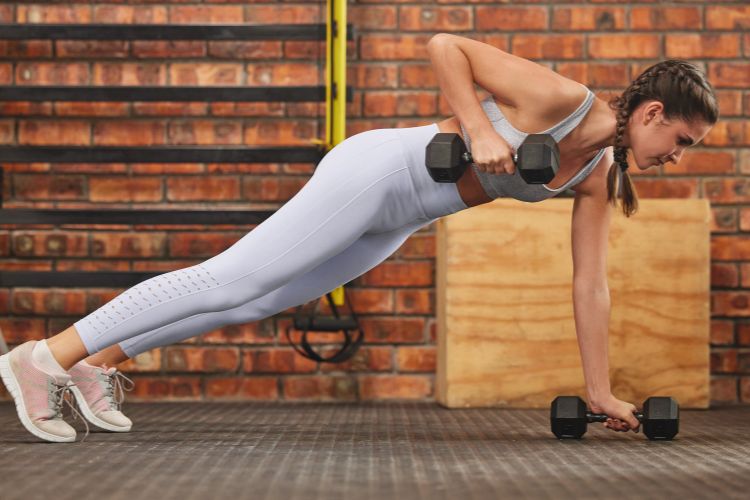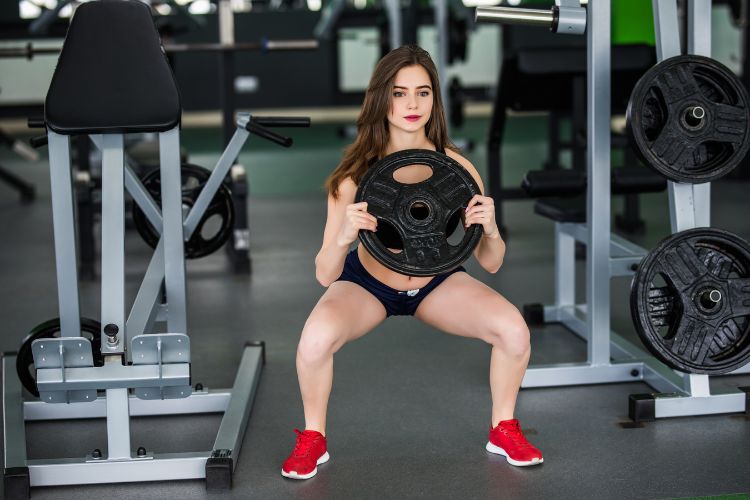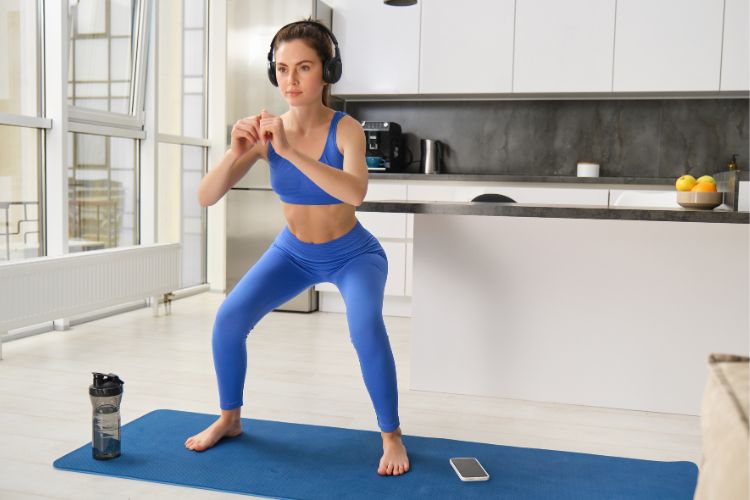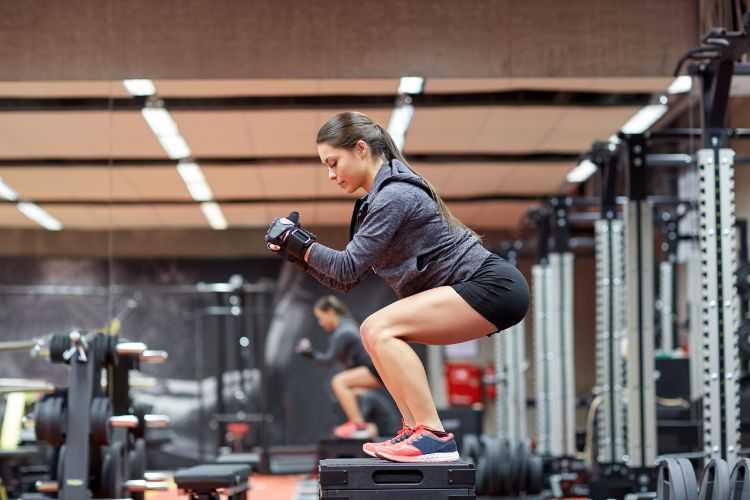Sign up for workout ideas, training advice, reviews of the latest gear and more.






For women, the constant juggle between work, home, and personal commitments can leave little time for self-care. However, if there’s one aspect of fitness that you should prioritize, especially as you age, it’s flexibility. Flexibility workouts not only improve our range of motion but also support our overall health, strength, and well-being.
1. Improved Joint Health: Flexibility exercises help maintain the health of our joints. As we age, our ligaments and tendons tend to shorten and tighten, reducing our range of motion. Regular flexibility exercises can keep these tissues supple, reducing the risk of injury.
2. Better Posture: With the increasing prevalence of desk jobs and smartphone usage, postural problems are becoming more common. Flexibility exercises can help counteract these imbalances by lengthening tight muscles and strengthening weak ones.
3. Reduced Pain: Chronic pain, especially in the back, neck, and shoulders, is often caused by muscle imbalances. Flexibility exercises can alleviate these imbalances, reducing pain and preventing future discomfort.
4. Enhanced Physical Performance: Whether you’re a runner, a dancer, or just someone who likes to stay active, greater flexibility can enhance your performance in physical activities by allowing a greater range of motion.
Before beginning any new exercise regimen, consult with a physician or fitness professional to ensure safety.
1. Stretching: This is the most common form of flexibility workout. There are two primary types:
2. Yoga: An ancient practice that combines breathing techniques with poses, yoga not only improves flexibility but also aids in mental well-being. There are several styles, from the gentle Hatha yoga to the more intense Vinyasa, so there’s something for everyone.
3. Pilates: This is a low-impact exercise that strengthens muscles while improving postural alignment and flexibility. Pilates can be done with or without equipment.
4. Tai Chi: An ancient Chinese martial art, Tai Chi combines movement and relaxation, promoting flexibility, balance, and peace of mind.
1. Consistency is Key: Like any other form of exercise, flexibility workouts offer the best results when done consistently. Aim for at least 10-15 minutes of stretching every day.
2. Listen to Your Body: Never push yourself to the point of pain. It’s okay to feel a mild tension, but sharp or intense pain is a sign to back off.
3. Warm Up First: Engage in a light warm-up like brisk walking or jogging to increase blood flow to the muscles, making them more pliable.
4. Incorporate Strength Training: Strength and flexibility go hand in hand. Strong muscles support better flexibility, and flexible muscles reduce the risk of injuries during strength training.
5. Stay Hydrated: Muscles are more flexible when they’re hydrated. Drink plenty of water before, during, and after your workout.
6. Be Patient: Flexibility is a journey, not a destination. Over time, with consistent effort, you’ll notice improvements.
As we delve deeper into the world of flexibility workouts, it’s important to understand that the benefits of flexibility are not just physical. They extend to our mental and emotional realms, offering us holistic well-being.
1. Stress Reduction: One of the most profound benefits of flexibility workouts, especially practices like yoga and Tai Chi, is stress reduction. By focusing on our breath, movements, and postures, we become more present, effectively quieting the mind and reducing anxiety.
2. Enhanced Body Awareness: Flexibility exercises cultivate a deeper sense of connection to our bodies. We become more attuned to our body’s signals, helping us make healthier choices and prevent potential injuries.
3. Boosted Self-Esteem: Mastering a new yoga pose or improving our range of motion can provide a significant confidence boost. Over time, this newfound confidence can translate into other areas of our lives.
4. Improved Digestion: Believe it or not, certain flexibility exercises can facilitate better digestion. Twisting poses, for instance, massage the internal organs, aiding in digestion and detoxification.
5. Hormonal Balance: Flexibility workouts, particularly yoga, can help regulate and balance our hormonal systems, which play a significant role in mood, weight management, and overall health.
Flexibility isn’t reserved for the young or athletically inclined. Women of all ages can and should engage in flexibility training. Here’s why:
1. Youth (Teens to Late 20s): During these formative years, flexibility workouts can help establish strong foundational habits. It can also aid in posture correction, especially with increased gadget use and study/work hours.
2. Adulthood (30s to 50s): This is often a phase of intense personal and professional commitments. Flexibility workouts can help combat the effects of sedentary lifestyles, ease childbirth recovery, and provide much-needed stress relief.
3. Senior Years (60 and above): As women enter their golden years, maintaining flexibility becomes paramount. It aids in joint health, reduces the risk of falls, and promotes independent living.
You don’t always need a structured workout to improve flexibility. Here are some ways to infuse flexibility into your daily routines:
1. Morning Stretches: Start your day with a series of stretches. Even five minutes can make a difference, waking up your muscles and setting a positive tone for the day.
2. Desk Breaks: Every hour, take a few minutes to stretch your neck, back, and legs. This not only relieves muscle tension but also boosts productivity.
3. Evening Wind-Down: Before bed, engage in gentle stretching or a short yoga sequence to calm the mind and prepare for restful sleep.
4. Play with Pets: If you have pets, play with them! Stretching out with your cat or playing fetch with your dog can be fun and physically rewarding.
5. Dance: Put on your favorite music and dance around the house. Dancing is an excellent way to improve flexibility and lift your spirits.
Flexibility workouts, when seen in a broader light, are not just about physical suppleness. They’re a doorway to holistic health, grounding us in the present and equipping us with tools to handle life’s challenges with grace. As women, we often play multiple roles, from caregivers to professionals, leaders to nurturers. Embracing flexibility means creating space for ourselves amidst the chaos, stretching our boundaries, and continually evolving. So, whether you’re integrating a ten-minute stretch into your morning routine or enrolling in a yoga class, remember that each step taken is a stride towards a healthier, happier, and more harmonious life. Embrace flexibility, and witness the transformative power it holds.
Stay up to date on the latest women’s health, fitness and lifestyle trends and tips.